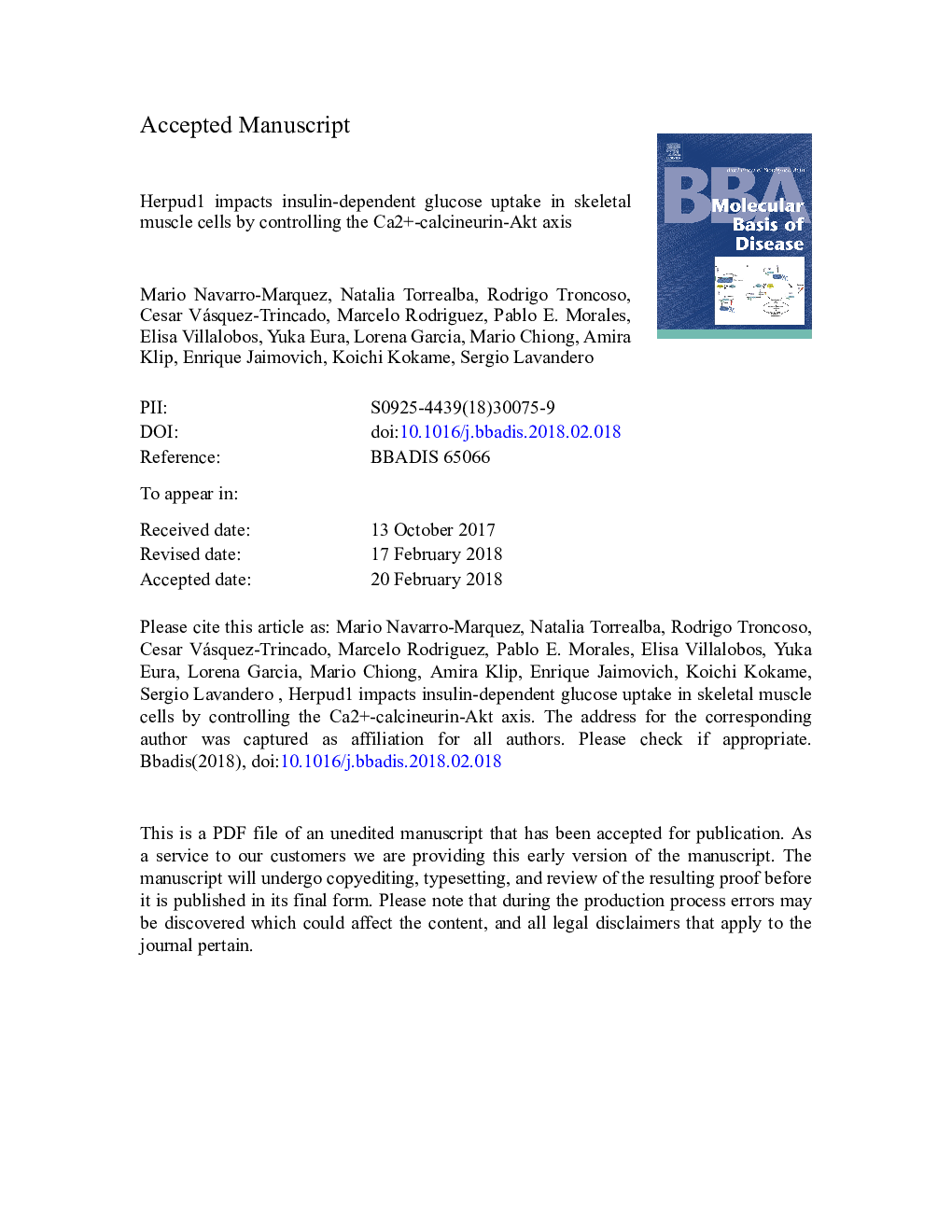| Article ID | Journal | Published Year | Pages | File Type |
|---|---|---|---|---|
| 8258468 | Biochimica et Biophysica Acta (BBA) - Molecular Basis of Disease | 2018 | 39 Pages |
Abstract
Skeletal muscle plays a central role in insulin-controlled glucose homeostasis. The molecular mechanisms related to insulin resistance in this tissue are incompletely understood. Herpud1 is an endoplasmic reticulum membrane protein that maintains intracellular Ca2+ homeostasis under stress conditions. It has recently been reported that Herpud1-knockout mice display intolerance to a glucose load without showing altered insulin secretion. The functions of Herpud1 in skeletal muscle also remain unknown. Based on these findings, we propose that Herpud1 is necessary for insulin-dependent glucose disposal in skeletal muscle. Here we show that Herpud1 silencing decreased insulin-dependent glucose uptake, GLUT4 translocation to the plasma membrane, and Akt Ser473 phosphorylation in cultured L6 myotubes. A decrease in insulin-induced Akt Ser473 phosphorylation was observed in soleus but not in extensor digitorum longus muscle samples from Herpud1-knockout mice. Herpud1 knockdown increased the IP3R-dependent cytosolic Ca2+ response and the activity of Ca2+-dependent serine/threonine phosphatase calcineurin in L6 cells. Calcineurin decreased insulin-dependent Akt phosphorylation and glucose uptake. Moreover, calcineurin inhibition restored the insulin response in Herpud1-depleted L6 cells. Based on these findings, we conclude that Herpud1 is necessary for adequate insulin-induced glucose uptake due to its role in Ca2+/calcineurin regulation in L6 myotubes.
Keywords
Related Topics
Life Sciences
Biochemistry, Genetics and Molecular Biology
Ageing
Authors
Mario Navarro-Marquez, Natalia Torrealba, Rodrigo Troncoso, Cesar Vásquez-Trincado, Marcelo Rodriguez, Pablo E. Morales, Elisa Villalobos, Yuka Eura, Lorena Garcia, Mario Chiong, Amira Klip, Enrique Jaimovich, Koichi Kokame, Sergio Lavandero,
